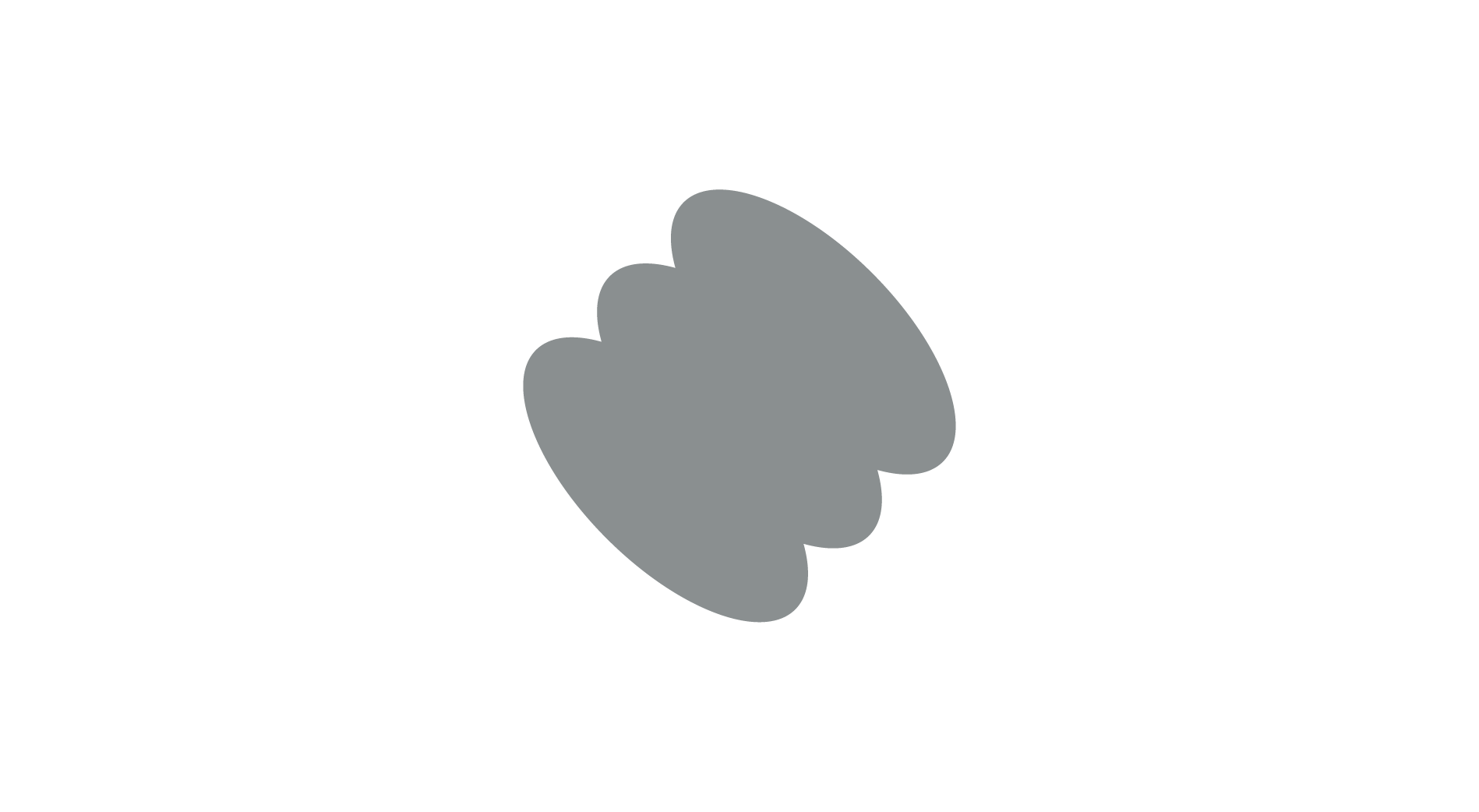
Kate Mullholand
INTERVIEW
03.07.2025
Alberto Rios de la Rosa: Your background combines formal art training with studies in Geosciences. How has this interdisciplinary education shaped your approach to representing Earth’s landscapes and geological processes in your work?
Kate Mullholand: Studying both art and geosciences taught me that expertise isn’t a prerequisite for meaningful dialogue—curiosity is. Curiosity is critical for effective communication. Someone once said you can be the most accomplished genius in your field, but there’s no bucking the status quo if you can’t articulate it to anyone. If you can’t explain your research to a four-year-old and keep them interested, what’s the point?
I’m neither a genius, a scientist, nor just a painter. But I know how to get people excited, read research, use field instruments, and hold real conversations with geophysicists, curators, and artists alike. Science could use a better PR team—so why not encrypt data into something stealthy, something that lives inside people’s homes and research institutions alike? Make it look cool and tell an even better story. Ultimately, my work distills these exchanges into something visually engaging—an entry point into environmental narratives that can be difficult to discuss in today’s polarized climate. There are lots of layers, both physically and even more conceptually, in my current work.
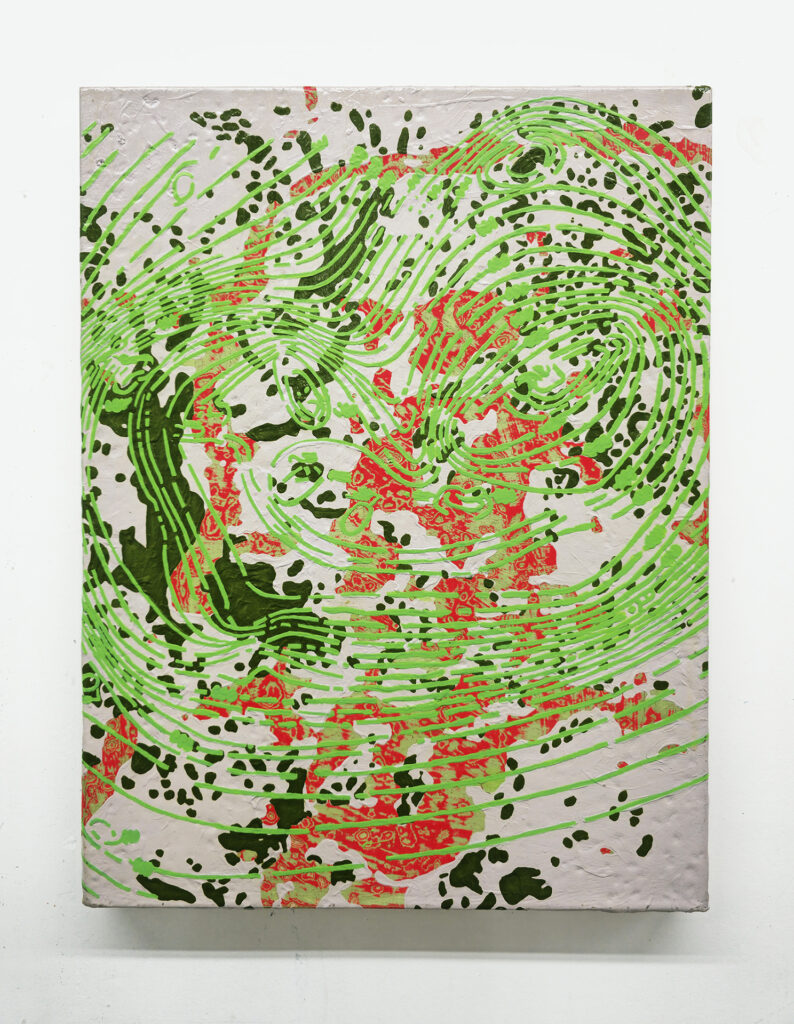
Evangeline (1976), 2024, Acrylic latex on canvas. 21.75 x 16.5 inches.
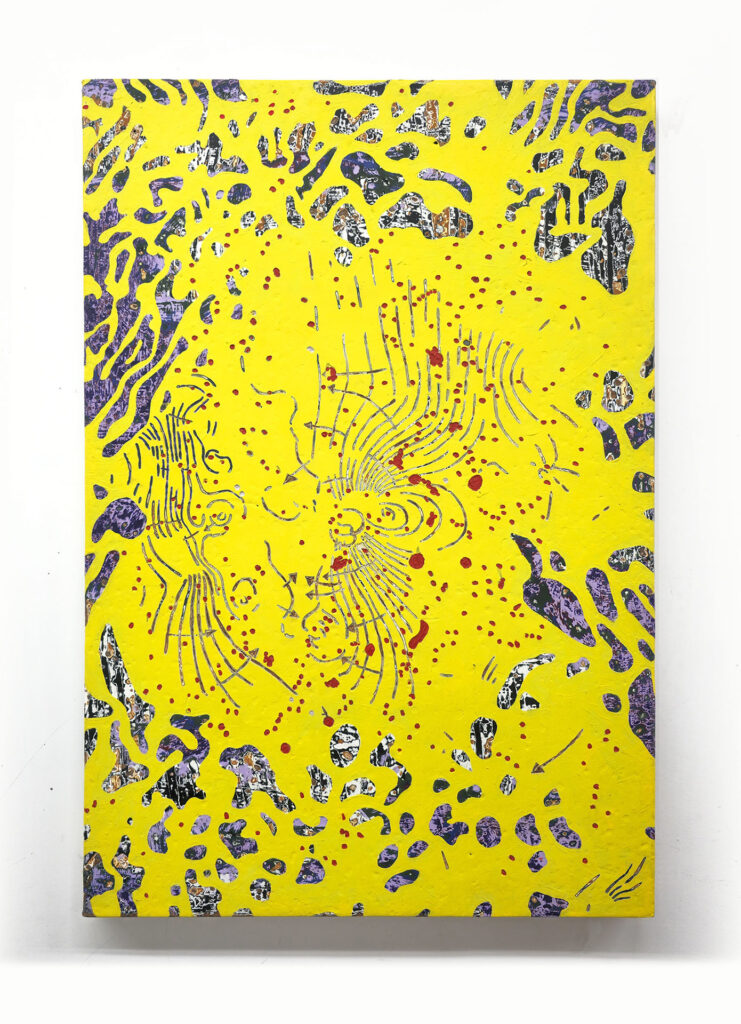
Movements (East Texas Salt of the Cretaceous and The Mexico Basin Aquifer Groundwater Flowpaths), 2024, Acrylic latex and Oil on canvas. 35.75 x 24.25 inches.
ARR: Your art emphasizes making science more accessible to the public. Could you talk about specific techniques or visual strategies you use to help viewers connect with complex geological concepts and time scales?
KM: I use layering, erosion, and abstraction in my paintings and paper works to make geological data and deep time more accessible, sparking curiosity through the unexpected. I’m cautious about presenting imagery that feels too authoritative, as I don’t claim to know more than anyone else. This discomfort has guided my approach, encouraging me to use abstraction and landscape to invite exploration. Inspired by Henri Bergson’s idea of time as a collection of experiences, my work reflects on how memory shapes our understanding of history, particularly natural history.
For me, it’s about the stories—like how Mexico City’s sinking reveals the ancient Aztec civilization of Tenochtitlan. Instead of focusing on millions of years and geological periods, I paint stories that connect people to the environment in ways that are accessible and memorable. My paintings aren’t maps but gestures or composites of maps. They may be abstracted or coded, but the stories are still the origin from which I pull to create the visuals. There’s as much to look at as there is to talk about. Without the stories, the paintings wouldn’t exist. It’s like how we say it’s about the journey, not the destination.
My paintings are like visual puzzles, shifting in scale with information and textures that invite physical interaction. Bright colors act as nature’s warning signals, like the colors of a fire or a sea snail, drawing people in with dazzle while hinting at deeper mechanics. These colors also reference familiar digital representations, like weather maps on the news or heat signatures, making a great vehicle to communiate meaning.
While my current work focuses on engaging viewers, I’m also moving toward public activism, prioritizing accessibility and direct engagement with the environment.
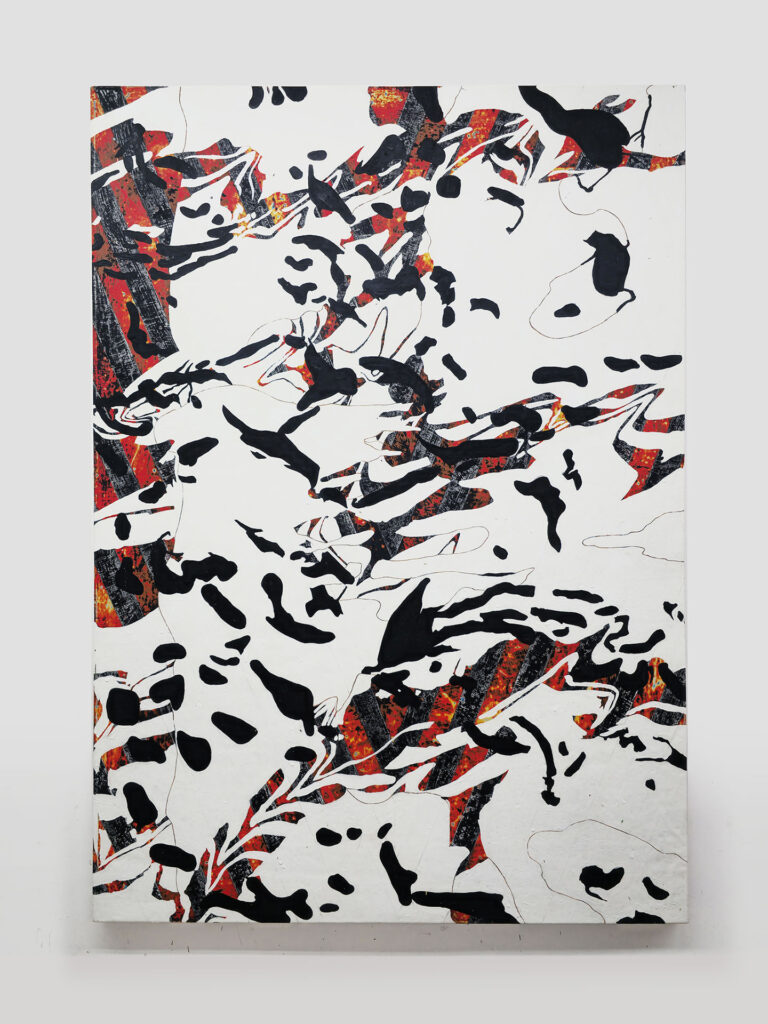
Ancestral Coasts, 2024, Acrylic latex on canvas. 36 x 24 inches.
ARR: The recent collaboration with K2 Sports seems like an interesting way to bring your geological-inspired art to a different context. What was it like adapting your work for snowboard designs, and how did you maintain the scientific narratives in this commercial format?
KM: Adapting my work for the K2 snowboard designs was an interesting challenge. Combining artwork that relies on climate with a sport dependent on the climate felt fitting. They used earlier works focused on geological processes—pieces where layering and texture were shaped by climate (humidity, temperature, etc.), sanding grit, and found paper.
The images they selected had market appeal, which is what I am going for with my Trojan horse approach to conceptual and abstract artmaking. The most exciting part was seeing how far screenprinting technology has come. The detail achieved was incredible: they scanned a 15 x 22-inch Agate, and the final prints showed such precision that you could see the fibers of the paper beneath the layers of coating and grip. It was fascinating to see the scientific narratives and textures evolve in their integrity in a commercial format while being used in a context as dynamic as snowboarding. The boards have just about sold out globally at this point. Thank you for reaching out! I have also attached several files of newer work to illustrate the interview.
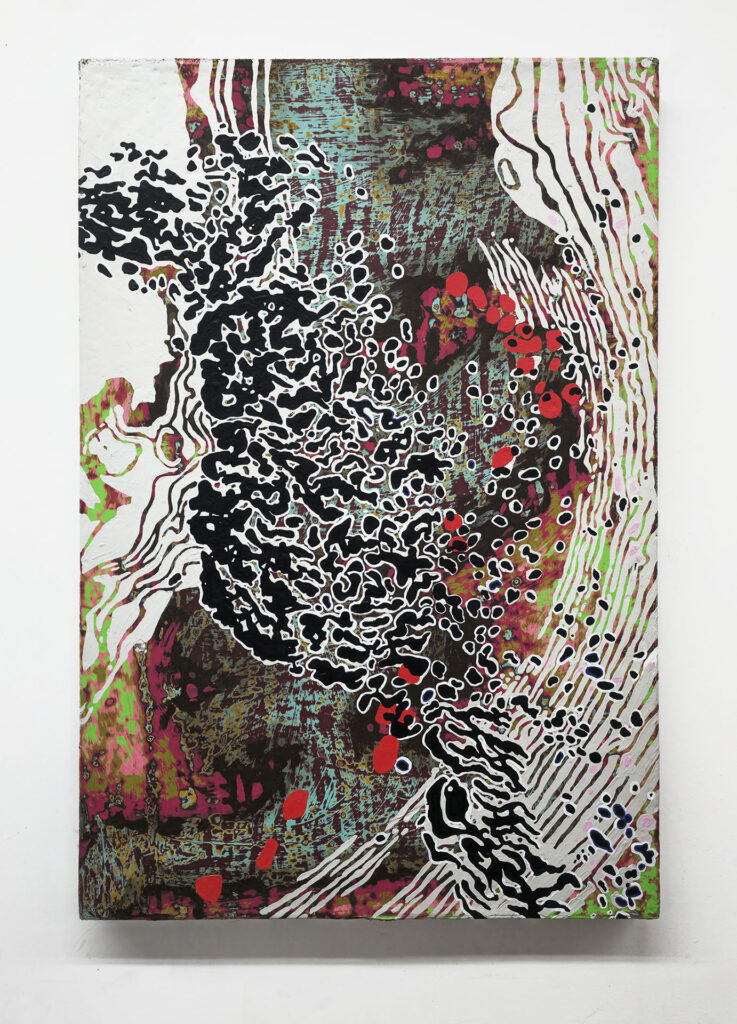
Dunes of Bajia Grande, 2024, Acrylic latex and UV on cotton. 72 x 48.5 inches.